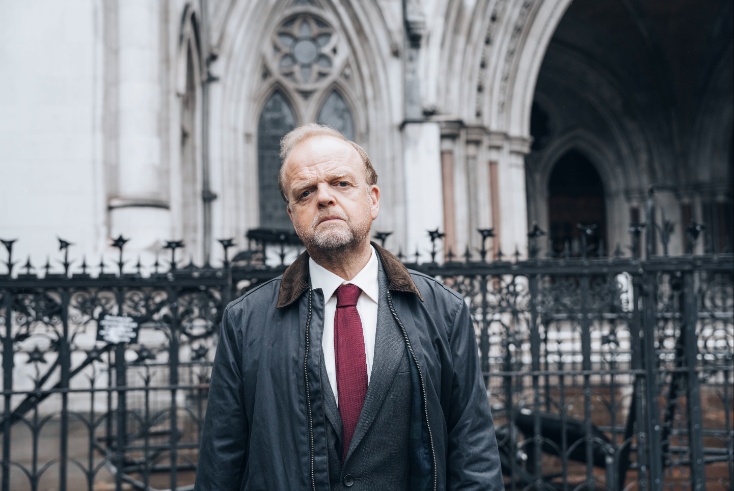It’s a great time to advertise on telly — here’s why

Opinion
Significant new research from Barb and Isba, the array of video content and TV’s proven effectiveness suggest the future is bright.
There’s a lot of activity around what used to be called telly and media and effectiveness research. Likewise content ownership and creation.
In audience research, we have two parallel strands of action: Barb playing out the fruits of its relationship with CFlight and the imminent “beta testing” of the Isba-led Project Origin.
Both promise significant — if differing — new insights into audience behaviour across platforms.
Each has its own focus, stakeholders and approach to communication but overlapping aims: measurement of people’s (remember them in a world of bots and programmatic fakery?) viewing across devices, channels and platforms.
For advertisers, this promises the holy grail of net, deduplicated reach — and probably how media channels interact too.
Funding yields influence
Things get a bit murky when it comes to funding. CFlight is a broadcaster initiative and Barb also boasts the BBC as a member.
By contrast, Origin is a world-first UK response to the World Federation of Advertisers’ Halo framework. It signals the end of advertisers’ long-standing folly of not funding industry research. Continuing respect, therefore, to Isba for getting advertisers to stump up. I never managed it.
However, although ostensibly a buyer initiative, advertisers are only staking a proportion of its necessarily substantial and enduring costs. The large majority is understood to be coming from the main, wealthy, online platforms.
Conspicuous by their absence are the major broadcasters, which (honourably) declined to align themselves with those whose measurement standards they have long held as meaningless and grossly lax.
Although overseen by joint industry committees that (usually) include representatives from media, agencies and advertisers, funding is what yields the real influence and control.
New insights
To reach consensus among its funders — historically apportioned on the basis of sales opportunity cost, so primarily media owners, then agencies, but not advertisers — media research has a long history of conservatism and slowness to change.
Absolute truth has always been a casualty in this, but everyone has rubbed along with something that’s way better than nothing and at least enables decisions within each media vertical.
So the good news is that we, and not least advertisers, are set to benefit from lots of new and valuable insight, albeit with some caution, lest funders leverage their interests. Especially the major online platform businesses, some of whose practices and approaches frankly do little to distinguish them.
Dizzying choice
For the viewers we are trying to influence commercially, volume, quality, choice (albeit at a price) and access have never been greater.
To the five public-service broadcasters and their catch-up services, add the hundreds of channels served by additional-cost subscription services (Sky, Virgin, BT…). Now, add the streamers — Netflix, Disney+, Apple TV+, Amazon Prime Video, Paramount et al.
Finally, other gateway streamers like DVR-developer-turned-Netflix-spin-off Roku and Hulu (owned by Disney), which are also continuing to try and interleave themselves into the massive value chain. Plus platforms like YouTube and TikTok.
Audiovisual content has always been big business — even more so now it’s gone global:
- Disney, which also owns 20th Century Fox, has seen off activist investors’ attempts to gain seats on its board as it pivots towards streaming
- Viacom heiress Shari Redstone first fought CBS for control of her inherited empire and has recently put her controlling stake in Paramount Global up for sale
- Sky is owned by multinational telecoms and media conglomerate Comcast, whose tentacles embrace Universal
- Warner Bros is linked to Discovery and Sony Pictures
Being mainly US-based corporates, there are legitimate concerns about each of them trying to wall-garden themselves with attendant costs to consumers, but that’s why we have competition regulators.
This makes it a threatening time for regional and national broadcasters, but they’re rising to the challenge with more and better content and initiatives. Mr Bates vs The Post Office has reminded us of the power and stamina of telly, in this case drama, where the slate across channels is strong.
Effectiveness assessment
Meanwhile, there’s been a surge in the popularity and output in the assessment of effectiveness. This has been gaining momentum slowly and for some time, but has accelerated with agencies’ realisation that media buying is no longer the main dish, many having commoditised themselves almost to oblivion.
More and better minds are joining the Fields, Binets, Shottons and Feldwicks and are now focused in this area. And — surprise! — telly is coming up strong again.
Thinkbox is, as usual, punching well above its weight and pushing projects like this at every opportunity.
Not just blind optimism
With all this going on, if you were “new telly”, why wouldn’t you join Thinkbox and get involved with Barb?
And despite the gloom cloaking the country and its political debate, the outlook for advertising seems relatively promising.
Hopefully, this is not just a manifestation of our natural instinctive blind optimism again. The latest IPA Bellwether Report indicates an uplift in spending but a bias towards promotional and experiential, both of which tend to do more in the now than for the eventual resilience, especially price, of brands.
If you’re an advertiser, I can’t remember a better time for brands to return to the most — and now demonstrably — effective medium for sustainable advantage.*
Which I’m going to keep calling telly, if that’s fine with you.
*OK, TV commercials cost more to make than TikToks — but there are sound business reasons for that!
 Bob Wootton spent 40 years working in advertising, first as a media buyer at some of the UK’s leading agencies before joining the trade body ISBA in 1996, where he was advertising and media director for 20 years. He is also the founder of Deconstruction, a media and tech consulting business, and presents The Guitar Show on YouTube.
Bob Wootton spent 40 years working in advertising, first as a media buyer at some of the UK’s leading agencies before joining the trade body ISBA in 1996, where he was advertising and media director for 20 years. He is also the founder of Deconstruction, a media and tech consulting business, and presents The Guitar Show on YouTube.




